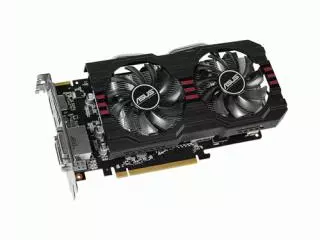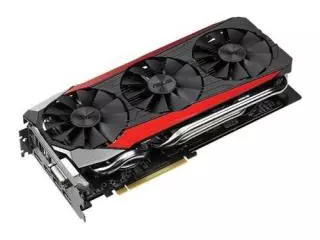Radeon R9 270 vs Radeon R9 390X
When comparing Radeon R9 270 and Radeon R9 390X, we look primarily at benchmarks and game tests. But it is not only about the numbers. Often you can find third-party models with higher clock speeds, better cooling, or a customizable RGB lighting. Not all of them will have all the features you need. Another thing to consider is the port selection. Most graphics cards have at least one DisplayPort and HDMI interface, but some monitors require DVI. Before you buy, check the TDP of the graphics card - this characteristic will help you estimate the consumption of the graphics card. You may even have to upgrade your PSU to meet its requirements. An important factor when choosing between Radeon R9 270 and Radeon R9 390X is the price. Does the additional cost justify the performance hit? Our comparison should help you make the right decision.
Main Specs
Radeon R9 270
Radeon R9 390X
Power consumption (TDP)
150 Watt
275 Watt
Interface
PCIe 3.0 x16
PCIe 3.0 x16
Supplementary power connectors
1 x 6-pin
1 x 6-pin, 1 x 8-pin
Memory type
GDDR5
GDDR5
Maximum RAM amount
2 GB
Display Connectors
2x DVI, 1x HDMI, 1x DisplayPort
2x DVI, 1x HDMI, 1x DisplayPort
Check Price
Check Price
Radeon R9 390X has 83% more power consumption, than Radeon R9 270.
Both video cards are using PCIe 3.0 x16 interface connection to a motherboard.
Both cards are used in Desktops.
Radeon R9 270 is build with GCN 1.0 architecture, and Radeon R9 390X - with GCN.
Radeon R9 270 and Radeon R9 390X are manufactured by 28 nm process technology.
Radeon R9 390X is 65 mm longer, than Radeon R9 270.
Game benchmarks
Assassin's Creed Odyssey
Battlefield 5
Call of Duty: Warzone
Counter-Strike: Global Offensive
Cyberpunk 2077
Dota 2
Far Cry 5
Fortnite
Forza Horizon 4
Grand Theft Auto V
Metro Exodus
Minecraft
PLAYERUNKNOWN'S BATTLEGROUNDS
Red Dead Redemption 2
The Witcher 3: Wild Hunt
World of Tanks
high / 1080p
21−24
50−55
ultra / 1080p
12−14
30−35
QHD / 1440p
7−8
24−27
4K / 2160p
5−6
14−16
low / 720p
40−45
75−80
medium / 1080p
27−30
55−60
The average gaming FPS of Radeon R9 390X in Assassin's Creed Odyssey is 126% more, than Radeon R9 270.
high / 1080p
30−35
75−80
ultra / 1080p
30−33
65−70
QHD / 1440p
14−16
50−55
4K / 2160p
8−9
27−30
low / 720p
70−75
130−140
medium / 1080p
35−40
85−90
The average gaming FPS of Radeon R9 390X in Battlefield 5 is 131% more, than Radeon R9 270.
low / 768p
50−55
45−50
QHD / 1440p
0−1
45−50
The average gaming FPS of Radeon R9 270 in Call of Duty: Warzone is 10% more, than Radeon R9 390X.
low / 768p
230−240
250−260
medium / 768p
200−210
230−240
ultra / 1080p
120−130
−
QHD / 1440p
95−100
150−160
4K / 2160p
55−60
100−110
high / 768p
170−180
220−230
The average gaming FPS of Radeon R9 390X in Counter-Strike: Global Offensive is 26% more, than Radeon R9 270.
low / 768p
60−65
70−75
ultra / 1080p
50−55
−
medium / 1080p
55−60
50−55
The average gaming FPS of Radeon R9 390X in Cyberpunk 2077 is 3% more, than Radeon R9 270.
low / 768p
120−130
120−130
medium / 768p
110−120
110−120
ultra / 1080p
80−85
110−120
The average gaming FPS of Radeon R9 390X in Dota 2 is 10% more, than Radeon R9 270.
high / 1080p
27−30
60−65
ultra / 1080p
24−27
60−65
QHD / 1440p
20−22
40−45
4K / 2160p
8−9
21−24
low / 720p
55−60
100−110
medium / 1080p
27−30
65−70
The average gaming FPS of Radeon R9 390X in Far Cry 5 is 114% more, than Radeon R9 270.
high / 1080p
35−40
90−95
ultra / 1080p
27−30
70−75
QHD / 1440p
16−18
45−50
4K / 2160p
−
21−24
low / 720p
130−140
210−220
medium / 1080p
75−80
140−150
The average gaming FPS of Radeon R9 390X in Fortnite is 93% more, than Radeon R9 270.
high / 1080p
35−40
80−85
ultra / 1080p
27−30
65−70
QHD / 1440p
14−16
45−50
4K / 2160p
14−16
30−35
low / 720p
70−75
130−140
medium / 1080p
40−45
90−95
The average gaming FPS of Radeon R9 390X in Forza Horizon 4 is 117% more, than Radeon R9 270.
low / 768p
100−110
160−170
medium / 768p
95−100
150−160
high / 1080p
40−45
95−100
ultra / 1080p
18−20
45−50
QHD / 1440p
8−9
35−40
The average gaming FPS of Radeon R9 390X in Grand Theft Auto V is 85% more, than Radeon R9 270.
high / 1080p
14−16
35−40
ultra / 1080p
10−12
30−35
QHD / 1440p
10−12
24−27
4K / 2160p
3−4
14−16
low / 720p
40−45
90−95
medium / 1080p
18−20
50−55
The average gaming FPS of Radeon R9 390X in Metro Exodus is 147% more, than Radeon R9 270.
low / 768p
120−130
120−130
medium / 1080p
110−120
−
Radeon R9 270 and Radeon R9 390X have the same average FPS in Minecraft.
high / 1080p
−
75−80
ultra / 1080p
14−16
50−55
4K / 2160p
−
18−20
low / 720p
70−75
120−130
medium / 1080p
18−20
85−90
The average gaming FPS of Radeon R9 390X in PLAYERUNKNOWN'S BATTLEGROUNDS is 151% more, than Radeon R9 270.
high / 1080p
16−18
35−40
ultra / 1080p
10−12
21−24
QHD / 1440p
2−3
16−18
4K / 2160p
2−3
10−11
low / 720p
40−45
90−95
medium / 1080p
21−24
50−55
The average gaming FPS of Radeon R9 390X in Red Dead Redemption 2 is 137% more, than Radeon R9 270.
low / 768p
75−80
180−190
medium / 768p
45−50
120−130
high / 1080p
27−30
70−75
ultra / 1080p
14−16
35−40
4K / 2160p
9−10
24−27
The average gaming FPS of Radeon R9 390X in The Witcher 3: Wild Hunt is 154% more, than Radeon R9 270.
low / 768p
90−95
120−130
medium / 768p
60−65
−
ultra / 1080p
40−45
65−70
high / 768p
55−60
120−130
The average gaming FPS of Radeon R9 390X in World of Tanks is 64% more, than Radeon R9 270.
Full Specs
Radeon R9 270
Radeon R9 390X
Architecture
GCN 1.0
GCN
Code name
Curacao
Grenada XT
Type
Desktop
Desktop
Release date
13 November 2013
16 June 2015
Pipelines
1280
2816
Boost Clock
925 MHz
1050 MHz
Transistor count
2,800 million
6,200 million
Manufacturing process technology
28 nm
28 nm
Texture fill rate
74.00
184.8
Floating-point performance
2,368 gflops
5,914 gflops
Length
210 mm
275 mm
Memory bus width
256 Bit
512 Bit
Memory clock speed
1050 MHz
Memory bandwidth
179.2 GB/s
384 GB/s
Shared memory
-
Shader Model
5.1
6.3
OpenGL
4.6
4.6
OpenCL
1.2
2.0
Vulkan
+
+
FreeSync
+
+
Bus support
PCIe 3.0
PCIe 3.0
HDMI
+
+
Bitcoin / BTC (SHA256)
293 Mh/s
684 Mh/s
Eyefinity
+
+
HD3D
+
PowerTune
+
TrueAudio
+
+
Mantle
+
Design
reference
reference
Bridgeless CrossFire
+
Number of Eyefinity displays
6
DisplayPort support
+
+
CrossFire
+
+
VCE
+
DDMA audio
+
+
Ethereum / ETH (DaggerHashimoto)
16 Mh/s
27.5 Mh/s
High bandwidth memory (HBM)
-
LiquidVR
+
TressFX
+
UVD
+
Check Price
Check Price

